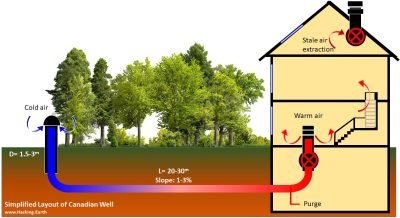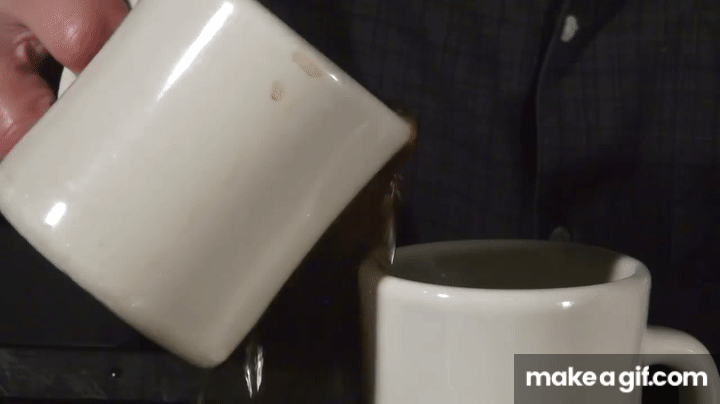Geothermal: "Puits Canadien"
The Canadian Well is a shallow geothermal building system. A low-enthalpy system, it does not extract heat from the ground; instead, it relies on the temperature differential between the ambient and subsoil. Also known as "Puits Provencal", this "bioclimatic" technology traces its roots to ancient Persia, where Windcatchers combine with Qanats to create such a cooling effect that it allowed ancient Persians to store ice for use in the hot summer months.
In traditional designs, the combination of Qanats and Windcatcher relies on the "Coanda effect".
The effect causes the air flow that enters the Qanat's access shaft to attach itself to the surface of the water.
As the water flows across the Qanat, the hotter air will follow it and cool down; when it reaches the shaft connected to the structure's basement, it flows and cools the space, and escapes through the windcatcher. In the windcatcher, the tower's opening is the one facing away from the direction of the prevailing wind.
Simplified Layout of a Qanat Windcatcher
In the Canadian/Provencal Well, external air comes through a system of buried pipes. In the subsoil, the temperatures tends to remain stable; largely warmer than the surrounding winter air, and often much cooler than the surrounding summer air. The deeper we drill, the smaller the range of variation; around 10-15 meters, the temperature tends to be stable year-round.
In the Canadian Well, the pipe run at a depth of around 2-3 meters (in some cases, it could be as deep as 5 m), it varies within a narrow range. The temperature differential between the subsoil and the ambient air defines the length; from 10m to 25m, and up to 100 meters. The system allows to change the inside air temperature of the home with respect to the outside air temperature; to warm it by by 6-7°C in winter, and 10-13°C in summer. The fluid is either the air itself, or a water-glycol mix.
In non-granitic regions, air comes in from the external collection shaft. it passes through the underground pipes where, it either releases heat to the ground and cools down, or picks up heat from the subsoil and warms up. Then, a single/dual flow Controlled Mechanical Ventilation (CMV) system filters the incoming air, and cools/warms it further as needed.
In granitic regions where Radon accumulation is a problem, the system circulates water/glycol instead of air. Such as "geothermal" Canadian Well setup will still exchange the heat, but it will prevent any contaminants that may seep in. The cooled/warmed water then enters a heat exchanger where it cools/warms up air flow that comes directly from above ground.
...now that's Lindy tech!
Indeed, the system came a long way from ancient Persia, to ancient Rome, to today's modern world. It is likely to go even furthe


